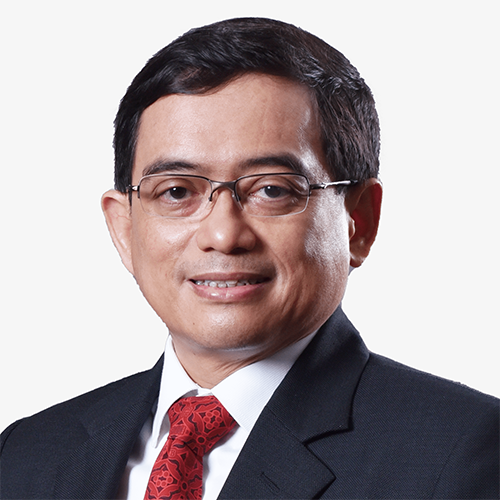Market forces and advances in technology are blurring the lines of engagement and challenging established practices in asset servicing. As these trends intensify, a new asset custody model is emerging that is transforming the way asset owners and managers interact with their service providers.
The holy grail of custody is to be able to deliver a single book of record. The promise of blockchain with the distributed ledger technology suggests that it is a matter of time when this becomes a reality. In the meantime, perhaps in anticipation of what this may mean, service providers are reinventing themselves to ensure that they remain relevant in the custody value chain.
It used to be that custody service in Asia was pretty straightforward. There were three categories of custodians operating in the region: the global custodian, sub-custodian, and domestic custodian. Each one serviced its segment of the market.
At the top of the food chain were the global custodians (GCs). Largely consisting of US financial institutions, their dominance of this segment is understandable. For the longest time, the pool of assets investing overseas came from the large US pension funds and asset managers looking at diversification, including into the emerging markets of Asia.
While they have the relationships, these institutions do not often have the network in Asia to be able to handle local market nuances such as regulation, cut-off times and corporate actions on behalf of their clients. For this, they appoint a network of sub-custodians.
Sub-custodians come in different shapes and sizes. Both foreign and domestic banks, the two general requirements global custodians require from a sub-custodian are a network of onshore offices and a rudimentary custody setup to deal with regulators, exchanges and national central securities depositories (CSDs). GCs have network managers who engage the pool of sub-custodians. Often, they will appoint a variety of sub-custodians in different markets. Their choice of sub-custodians does not just rest on the quality of service but also on other elements such as reciprocity.
As Asia started to come into its own, building a domestic asset pool over the past two decades with the emergence of pension funds, insurance companies and asset managers, the role of domestic custodians came to the fore. Asia, with economic growth rates that are easily twice the pace in the developed markets, also attracted international asset managers to set up in Hong Kong and Singapore to be closer to the markets they are investing in. More recently, we have also seen pension funds from outside Asia open offices in the region.
The blurring of the lines is most apparent in the GC space. US houses such as Bank of New York Mellon, Brown Brothers Harriman, JPMorgan, Northern Trust and State Street are now not only competing among themselves, they are having to contend with expanding European players such as BNP Paribas and universal banks such as Citi, HSBC and Standard Chartered.
Here, the concept of frenemy (collaborator and competitor at the same time)probably applies. These GCs traditionally have been using the likes of Citi, HSBC, Standard Chartered and also Deutsche Bank as sub-custodians. But with the emergence of Asia’s institutional funds market, especially following the global financial crisis of 2008, these sub-custodians have now become GCs in their own right. At first covertly with descriptions such as regional custodians or international custodians, they now are much more open about discussing having a GC offering to Asian clients.
The decision to build a GC offering should not come as a surprise. With their strong links in Asia, Citi, HSBC and Standard Chartered have established ties with Asian clients that are now increasingly looking beyond their home markets for investment opportunities. For Asian clients, especially the official institutions such as central banks, these custodians are chipping away at the edges only. The movement to new providers is at an early stage.
But there have been high-profile breakthroughs. BNP Paribas’ coup securing the global custody mandate of Asian Infrastructure Investment Bank, the Beijing-based multilateral development bank, in 2017 against a bevy of the traditional GCs is a case in point. The Asset understands that what stood out during the beauty parade was BNP Paribas’ attention to detail against the perceived more formulaic approach of the others.
The growing affluence in the region is also boosting the activity of other large asset gatherers such as pension funds, insurance companies and asset managers. Here is where the battle for a share of wallet is most apparent.
China is the centre of attention among service providers especially with the recent relaxation of restrictions to invest offshore following a lull of three years. The scheme, the Qualified Domestic Institutional Investor (QDII), has been in hiatus since China’s stockmarket debacle in 2015. Apart from the international banks looking to win business, Chinese banks also are not ceding ground and, despite their limited experience, are looking at how they can play a role.
Another angle that has played up is using business reciprocity to lock in regional mandates. For example, the recent wins awarded by insurance companies are on the back of bancassurance arrangements struck earlier. Expect more of these deals in the coming years especially as insurance assets continue to grow in the region.
With the rise of the asset management industry, the role of the domestic custodians serving the onshore business will also become a growing opportunity. The much anticipated China local custody licence to be awarded later this year will finally open the way for foreign banks to begin offering domestic custody services especially to their existing clients of foreign asset managers expanding in the mainland.
The more challenging market conditions that have prevailed in recent years also resulted in new investment requirements that need more innovative investment solutions. “There’s fee compression, narrowing distribution channels, and the need to differentiate themselves. Asset managers are doing that by building into new asset classes organically or inorganically. Some of the world’s more famous traditional long-only asset managers are building out passive businesses as well as their active businesses,” says Mark England, head of asset manager and insurance sector sales, Asia Pacific at State Street.
Because of these new client requirements, custodians have been investing heavily in their digital and technology capabilities. BNY Mellon, for example, owns a software company that allows it to provide “client solutions”, a term that means it can put together a package of services that is tailored specifically to a client’s requirements.
These clients, which include asset managers, insurance companies, pension funds, central banks and sovereign wealth funds are now also moving rapidly towards embracing the use of highly sophisticated technology platforms in their business process with a lot of help from their custodians.
For their part, the role of the custodians, whether global custodians or sub-custodians, have now expanded beyond just custody to overall asset servicing. In addition to the traditional services, asset servicing now also includes collateral management, securities lending, transition management, securities financing and middle office outsourcing.
The funds flow and change in regulation are therefore also being swept up by advancements in technology. Implementing a custody mandate involves numerous processes including safekeeping, clearing and settlements, fund administration, fund accounting, corporate action and reporting.
All of these processes used to be heavily manual involving huge numbers of people, working numerous man-hours with calculators and spreadsheets. Over the years, these processes have been gradually automated as the custodians seek to enhance efficiency and reduce cost.
The onset of new regulations to enhance transparency and risk management has also fast-tracked the automation of these processes into the digital world. Producing reports, for example, has now evolved from purely paper-based requiring several analysts to one that is much more sophisticated including the application of algorithms analytics.
Financial institutions in general, are using digital financial technologies to “reimagine” their business models as they seek to enhance efficiency, reduce cost and remain competitive in an increasingly digital world.
According to a recent study sponsored by State Street, the top five forms of technology that financial institutions are focussing on are:
• Blockchain – the digital ledger has the potential to automate banking processes like clearing and settlement, creating efficiencies in an increasingly regulated world;
• Predictive analytics – involves data from sources such as social media for equity and sector sentiment analysis that deliver insights into investor behaviour;
• Artificial intelligence – uses machine learning to study investor patterns to new data. “By analyzing daily prices in addition to traditional news, social media, company filings and research reports, machines are helping investors make better informed decisions,” according to State Street.
• Real performance time tracking – this involves using cloud-based platforms and advance analytical tools in order to help investment firms track performance, spot trades and identify trades.
• Biometric authentication – helps ensure the safety of investment data through biometric authentication such as fingerprint identification, retina scans, and voice or facial recognition.
For custodians, the jump into the digital age has a multi-faceted impact. First, clients are increasingly relying on their custodians to make their transition into the digital world smoother for them.
While many of them believe technology is vital, they don’t necessarily want to be burdened by the added cost and operational issues that come with the use of digital technology. This means custodians will have to fill this gap. Second, the jump into the digital age is blurring the lines between global custodians and sub-custodians. Sub-custodians’ new digital capabilities allow them to transcend the traditional business models.
With the development of more advanced technology, it is now possible for the traditional sub-custodians to service their Asian clients in the global markets to become GCs themselves. In fact, this is where the likes of Citi, HSBC and Standard Chartered are making inroads.
The reverse is also true. With the use of digital technology platform, a global custodian can service its own sub-custody requirements without having to use a third party sub-custodian in certain markets.
To create stickiness, custodians are now enlisting their clients to undertake joint technology roadmaps. It is a process that includes developing and increasing the use of artificial intelligence, or maximizing the use of their key performance indicators (KPIs), for example.
BNY Mellon has invested in an “innovation lab”, basically a centre that studies and produces high technology investment and custody solutions, for their clients in Asia. “We have become a clients’ solutions company. We’re now a services company within a bank,” says Rohan Singh, Asia Pacific head of asset servicing at BNY Mellon.
With many moving parts, custodians in Asia are at a crossroad. They are building a new business model while defending existing revenue sources. As the 2018 World Cup reaches the climax with former champions such as Argentina, Germany, Portugal and Spain knocked out, one wonders whether it foreshadows a similar change with the rise of new champions taking the asset servicing cup tomorrow.





.jpg)
.jpg)


